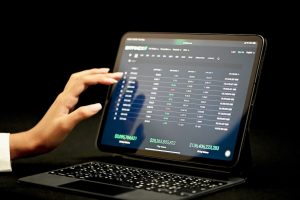Forex trading leverage can offer significant opportunities for profit, but it also comes with inherent risks. Understanding how to manage leverage effectively can make the difference between success and failure in the forex market. In this article, we will explore the concept of leverage, its benefits, and most importantly, how to minimize risks associated with leverage.
Firstly, let’s discuss what leverage is in the forex market. Leverage is essentially borrowed capital that allows traders to control a larger position than their initial investment. For example, a leverage of 1:100 means that for every $1 of your own capital, you can control $100 in the market.
The primary benefit of leverage is the ability to amplify potential profits. With a small investment, traders can have exposure to much larger positions and potentially earn significant returns. However, it is important to note that leverage is a double-edged sword. While it can multiply gains, it can also amplify losses. This is why it is crucial to understand how to manage leverage effectively to minimize risks.
The first step in managing leverage is to determine an appropriate leverage level for your trading strategy and risk appetite. Different brokers offer varying leverage options, ranging from 1:10 to 1:1000 or even higher. It is important not to be tempted by the highest leverage available, as it can lead to excessive risk-taking. Instead, consider your trading style, experience, and risk tolerance to determine a suitable leverage level.
Once you have set your leverage level, the next step is to implement risk management techniques. One of the most effective ways to minimize risks associated with leverage is to use proper position sizing. This involves calculating the appropriate lot size for each trade based on your account size and risk tolerance.
A commonly recommended rule of thumb is to risk no more than 1-2% of your account capital on any single trade. By adhering to this rule, you ensure that even if a trade goes against you, your losses remain manageable. It is essential to remember that higher leverage does not necessarily mean larger position sizes. The key is to strike a balance between leverage and position sizing to control risk effectively.
Another crucial aspect of managing leverage is implementing stop-loss orders. A stop-loss order is a predetermined level at which your trade will automatically close if the market moves against you. By setting a stop-loss order, you limit potential losses and protect your capital from significant drawdowns.
It is important to place stop-loss orders at reasonable levels that consider market volatility and the specific currency pair being traded. Placing a stop-loss order too close to the entry price may result in premature exits due to market noise, while setting it too far may expose you to excessive risk. A general guideline is to place stop-loss orders beyond significant support or resistance levels to account for normal market fluctuations.
Furthermore, regularly monitoring and adjusting leverage levels based on market conditions is crucial for risk management. Forex markets are dynamic and can experience sudden shifts in volatility. During periods of heightened volatility, it may be prudent to reduce leverage to protect against large market swings. Conversely, during stable market conditions, slightly higher leverage may be appropriate to capitalize on potential opportunities.
Finally, continuous education and staying informed about market developments are essential for effective leverage management. Understanding fundamental factors and technical analysis can help you make informed trading decisions and avoid unnecessary risks. Additionally, staying updated on economic news, central bank announcements, and geopolitical events can help you anticipate market movements and adjust your leverage and positions accordingly.
In conclusion, leverage is a powerful tool that can magnify both profits and losses in forex trading. To minimize risks associated with leverage, it is crucial to determine an appropriate leverage level, implement proper position sizing, utilize stop-loss orders, regularly monitor market conditions, and continuously educate yourself. By following these guidelines, you can effectively manage forex trading leverage and increase your chances of long-term success in the forex market.





